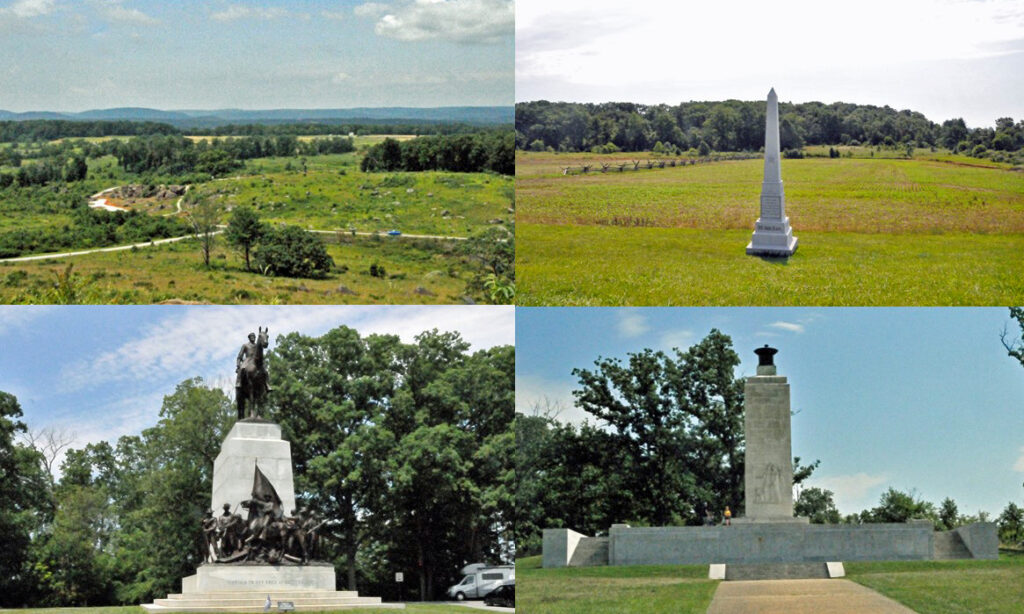Continuing our road trip, today we visit Gettysburg, the site of the turning point of the American Civil War.
By June 1863, the Confederate Army of Northern Virginia, led by General Robert E. Lee, had achieved significant victories over Union forces in the South. To take the fight to the North, Lee ordered his troops into Pennsylvania. President Lincoln responded by ordering the Union Army of the Potomac to stay between the Confederate ranks and Washington, D.C. On the morning of July 1, 1863, a contingent of soldiers from each army unexpectedly converged on Gettysburg, a college town in southern Pennsylvania. After shooting broke out, commanders on both sides ordered their forces into and around Gettysburg, where massive battles ensued. The fighting ended with Lee’s retreat on July 4. The day before, an open-field assault by 12,500 Confederate soldiers against Union forces assembled atop Cemetery Ridge (“Pickett’s Charge”) had failed, with disastrous casualties. By then, 93,921 Union soldiers and 71,699 Confederate soldiers had engaged in the battles, with almost a third of them killed, wounded, captured or missing.
In 1895, Congress established the Gettysburg National Military Park. Today, the park contains almost 5000 acres. Forty miles of scenic roads lead to famous battle sites, such as Little Round Top and Seminary Ridge. Hundreds of cannons mark artillery positions during the battles. The park includes restored buildings figuring into the fighting. Hundreds of monuments and memorials honor groups of Gettysburg combatants near the places where they fought. The most impressive monument is the Eternal Light Peace Memorial, dedicated at a ceremony in 1938 on the 75th anniversary of the battle that was attended by 1845 veterans from both sides, averaging 94 years of age. The Visitor Center orients guests to various battle locations and features a cyclorama (more about that and the Gettysburg Address coming soon).

Comments are closed.